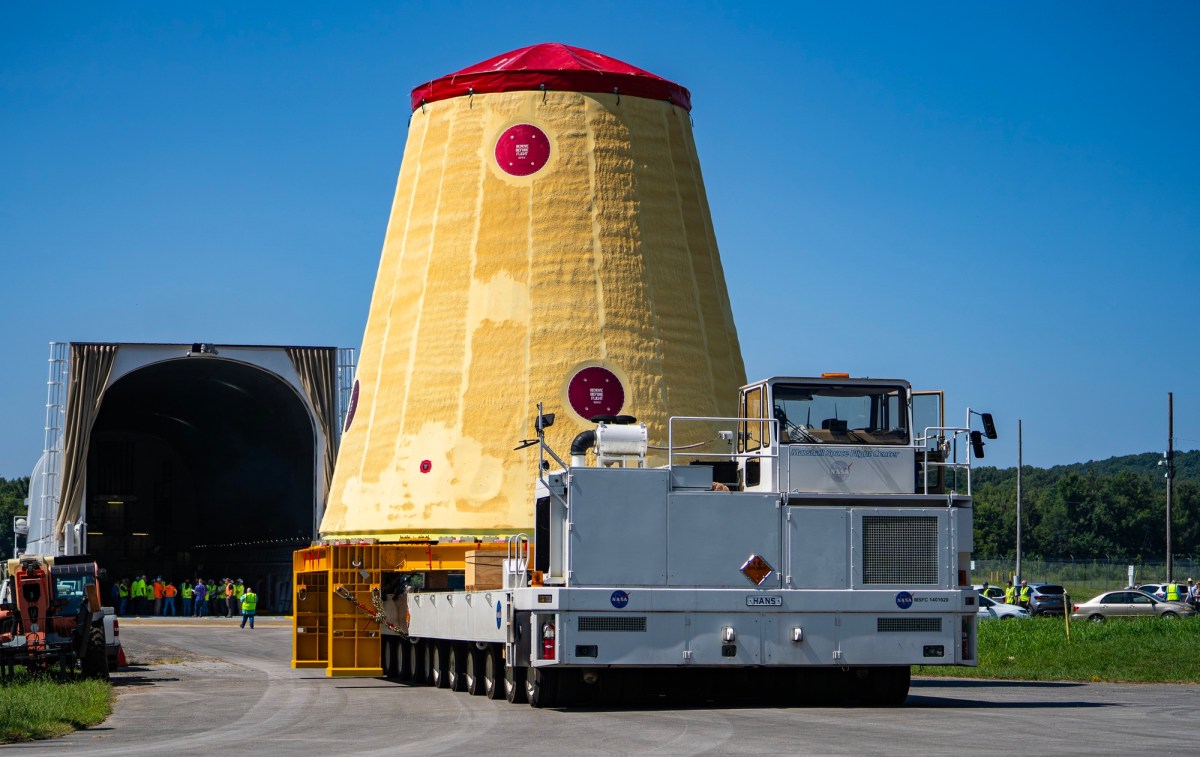WASHINGTON — NASA plans to extend the contract for one element of the current version of the Space Launch System with options that suggest the agency is protecting against multi-year delays in future missions.
NASA rolled out Aug. 21 the Launch Vehicle Stage Adapter (LVSA) for the SLS that will be used on the Artemis 2 mission. The structure, built at the Marshall Space Flight Center in Alabama, was loaded onto a barge for transport to the Kennedy Space Center in Florida, where other components of the rocket are awaiting integration.
The LVSA is a cone-shaped structure 8.4 meters tall that tapers from 8.4 meters across at its base to 5 meters at the top. The structure is used to connect the Interim Cryogenic Propulsion Stage (ICPS) used as the upper stage on the Block 1 version of the SLS with the core stage. The LVSA will not be used on later versions of the SLS that replace the ICPS with the larger Exploration Upper Stage.
Teledyne Brown Engineering is the prime contractor for the LVSA under a contract awarded in 2014. The contract, valued at about $200 million, was scheduled to end in September.
NASA, in an Aug. 14 procurement filing, announced its intent to extend that contract to at least September 2026. That would allow Teledyne Brown to complete work on the third and final LVSA “as well as to ultimately conclude LVSA activities” under the contract.
The proposed extension also includes several options for additional extensions. The first is a nine-month extension that would allow the contract to run through June 2027. That would be exercised “in the event an extension is necessary to conclude Artemis III launch and post-flight analysis in support of NASA Administrator Bill Nelson’s public announcement on January 9, 2024, in relation to the current SLS launch manifest,” the filing stated.
That is a reference to the announcement by the agency of delays in both the Artemis 2 and 3 missions. At a Jan. 9 briefing, NASA said that Artemis 2 would launch no earlier than September 2025, with Artemis 3 to follow no earlier than September 2026.
The agency has not updated those launch dates since then. However, NASA has yet to publicly resolve one of the issues that prompted the Artemis 2 launch delay, erosion to the heat shield of the Orion spacecraft on the uncrewed Artemis 1 mission in 2022. It is also unclear if development of key elements for Artemis 3, notably the Starship lunar lander by SpaceX, are on a schedule that could support a mission in late 2026.
NASA’s action to extend the LVSA contract appears to anticipate additional delays. “If additional revisions to the SLS launch manifest are necessary,” it states, the proposed extension includes “an additional five option periods of six months each.” If all are exercised, the contract would run through December 2029.
